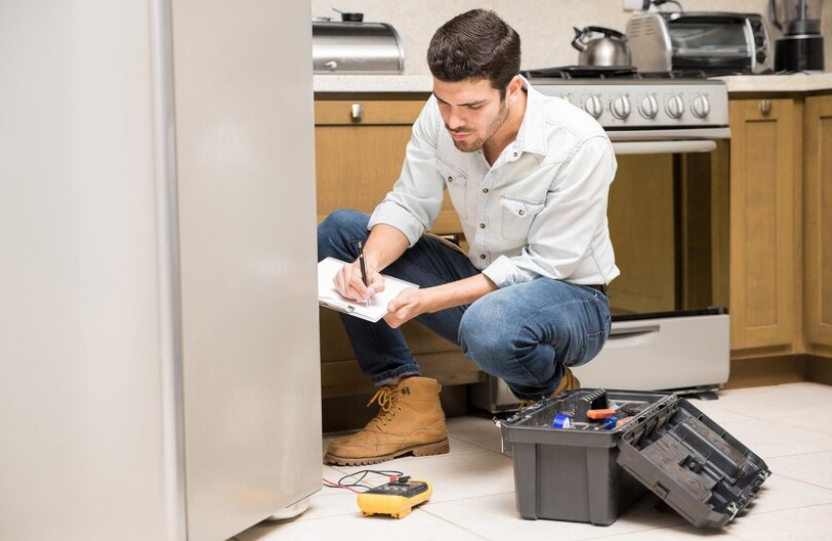A well-functioning refrigerator is the unsung hero of any kitchen. It’s where we store the essentials, from fresh produce to family leftovers, ensuring our food stays safe and delicious. But what happens when your trusty fridge starts acting up? The sudden loss of cooling, strange noises, or leaks can be frustrating and costly if not addressed.
In this guide, we’ll explore the five most common refrigerator problems and the refrigerator parts you may need to fix them, empowering you with the knowledge to troubleshoot before calling a professional.
1. Problem: Refrigerator Not Cooling Properly
Possible Cause: Faulty Evaporator Fan or Condenser Coils
Solution:
A refrigerator that isn’t cooling can quickly turn into a food safety issue. This problem often stems from a malfunctioning evaporator fan, which circulates cold air throughout the fridge. If the fan isn’t working, the cooling process is disrupted. Another culprit could be dirty or clogged condenser coils, typically found at the back or bottom of the unit. These coils need to be clean to dissipate heat efficiently.
Example:
Imagine coming home from grocery shopping, only to find that your fridge is barely cooler than room temperature. A quick cleaning of the condenser coils or replacing the evaporator fan could save the day and save you from losing your groceries.
2. Problem: Refrigerator is Making Unusual Noises
Possible Cause: Faulty Compressor or Condenser Fan Motor
Solution:
Refrigerators make some noise, but if you hear loud buzzing, rattling, or grinding, there might be a problem with the compressor or condenser fan motor. The compressor is essential for cooling, and any damage can disrupt its function. Similarly, if the condenser fan motor is faulty, it won’t be able to cool the compressor properly.
Example:
One customer reported a loud, clanging noise whenever they opened the fridge. After a quick inspection, they found the fan blades were loose. Replacing the fan motor not only restored peace and quiet but also helped the fridge run more efficiently.
3. Problem: Water Leaks Inside the Refrigerator
Possible Cause: Blocked Defrost Drain or Damaged Water Inlet Valve
Solution:
Water pooling inside your fridge can be a sign of a blocked defrost drain, which is supposed to channel water away from the unit. A clogged drain can lead to leaks that accumulate under the crisper drawers. Another possibility is a damaged water inlet valve, which can cause leaks at the back of the refrigerator.
Example:
A friend recently found a puddle of water under the veggie drawers. It turned out to be a blocked defrost drain. A simple cleaning of the drain tube with warm water and baking soda solved the problem, saving a service call.
4. Problem: Refrigerator Runs Constantly
Possible Cause: Faulty Thermostat or Door Seal
Solution:
If your refrigerator is running constantly, it could be due to a faulty thermostat or worn-out door seals. The thermostat regulates the temperature, and if it’s broken, the fridge may stay on indefinitely. Additionally, worn or broken door seals allow cold air to escape, causing the fridge to overwork to maintain the set temperature.
Example:
One homeowner noticed their energy bills climbing and traced it back to their refrigerator that never seemed to take a break. A quick test of the thermostat confirmed it wasn’t cycling off. After replacing it, the fridge resumed normal operation, and their energy costs dropped.
5. Problem: Ice Maker Not Producing Ice
Possible Cause: Malfunctioning Ice Maker or Clogged Water Filter
Solution:
When the ice maker stops producing ice, it’s often due to a clogged water filter or a malfunctioning ice maker assembly. The water filter prevents impurities, and if it’s clogged, it can limit or stop water flow to the ice maker. Similarly, mechanical issues with the ice maker itself can prevent it from functioning correctly.
Example:
Picture this: you’re hosting a party and suddenly realize the ice maker isn’t working. By quickly replacing the water filter, you restore the flow and keep your guests’ drinks cool. This small part change saved a lot of hassle!
Conclusion
Understanding common refrigerator problems and knowing which parts to inspect can save time and money. While some issues may require professional attention, many can be solved with a bit of troubleshooting and the right replacement part. By taking a proactive approach, you can extend your refrigerator’s life and enjoy a fully functioning appliance for years to come. Don’t let small issues grow into costly repairs—try these tips to keep your fridge running smoothly.
